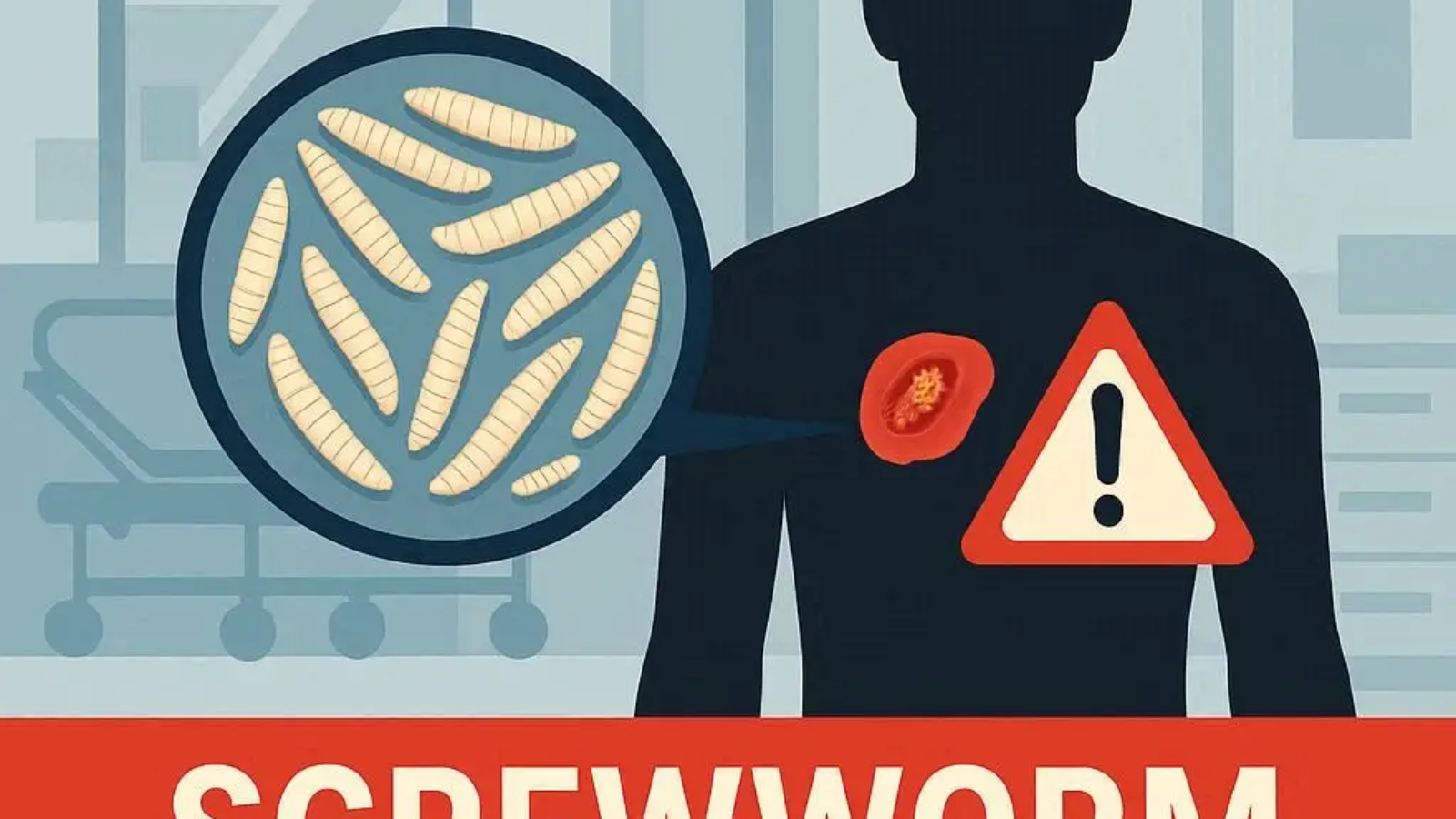A shocking medical alert has been confirmed in the United States – the first human case of a flesh-eating screwworm infection. This news has raised serious public health concerns and many are asking the same questions: What is a screwworm? How dangerous is it? And what precautions should people take?
Let’s break it down in simple words.
🦠 What is a Flesh-Eating Screwworm?
The screwworm is a parasitic fly whose larvae (maggots) feed on the living tissue of animals and humans. Unlike normal maggots that eat dead tissue, screwworm larvae burrow into healthy flesh, causing dangerous wounds that can spread fast.
- Scientific name: Cochliomyia hominivorax
- Common name: New World screwworm
- Why it’s scary: It doesn’t just feed on dead tissue—it eats living flesh.
📍 First Human Case in the U.S.
Health officials confirmed the first human screwworm infection in the United States, sparking nationwide awareness. The patient is under medical care, and experts are monitoring the situation to prevent any possible spread.
This is especially alarming because screwworm infestations were eradicated in the U.S. decades ago after years of government programs. The fact that a human case has been confirmed shows the urgent need for public awareness and preventive measures.
🚨 Symptoms of Screwworm Infection
Doctors say early detection is critical. Here are some common symptoms:
- Painful wound that gets bigger instead of healing
- Foul-smelling discharge from the wound
- Visible larvae (tiny moving worms) in the wound
- Fever, chills, and infection if untreated
If anyone notices such symptoms after travel or outdoor exposure, immediate medical care is necessary.
🌎 How Did It Reach the U.S.?
Experts suggest possible reasons:
- International travel: Travelers may unknowingly bring larvae.
- Animals crossing borders: Pets or livestock could be carriers.
- Climate change: Warmer weather may make survival easier for parasites.
The U.S. Department of Agriculture (USDA) is investigating and monitoring the outbreak closely.
🛡️ How to Protect Yourself and Your Pets
Prevention is the best cure. Doctors and veterinarians recommend:
- Keep wounds clean and covered
- Use insect repellent in outdoor or tropical areas
- Regularly check pets and livestock for strange wounds
- Avoid traveling with untreated open cuts
🔬 What Scientists Are Saying
Scientists warn that emerging parasites and infections are rising globally due to climate change, urbanization, and global travel. The screwworm case is a reminder of how quickly rare diseases can return if vigilance is lost.
✨ Final Thoughts
The first U.S. case of human flesh-eating screwworm infection is a wake-up call. While rare, it shows how vulnerable humans and animals can be to parasites once thought eliminated.
👉 The best defense is awareness, prevention, and early medical care. Stay safe, keep your wounds clean, and protect your pets—because health truly starts with knowledge.

 Cart is empty
Cart is empty 
https://shorturl.fm/75uOz